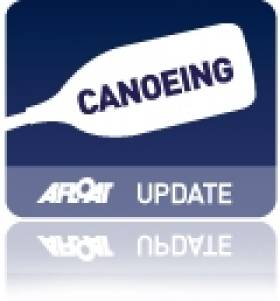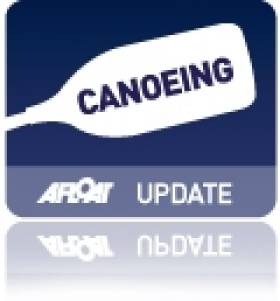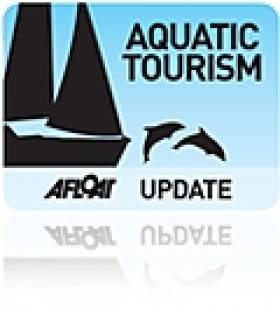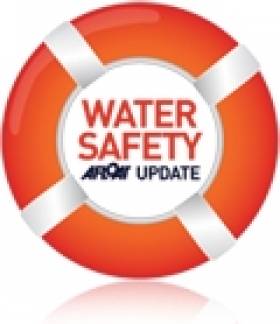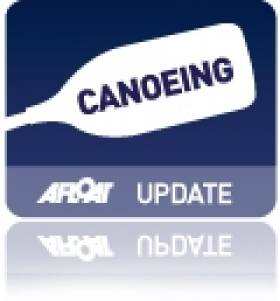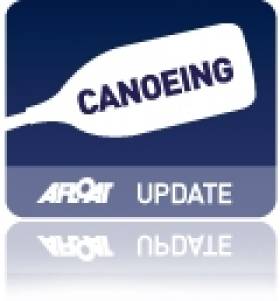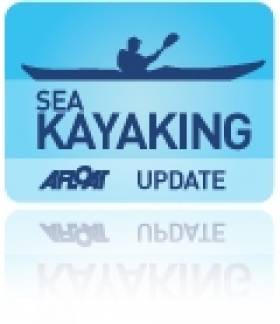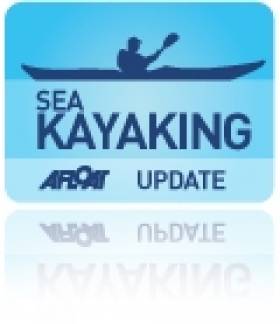Displaying items by tag: Kayaking
Sea Kayaking Symposium in Mayo this October
The Irish Sea Kayaking Association (ISKA) will host its annual symposium on 8-9 October 2011 in Mulranny, Co Mayo.
The activity-filled weekend at the Mulranny Park Hotel will include training workshops, peer paddles and talks by leading kayaking experts.
Delivering the keynote speech will be Jasper Winn, author of Paddle: A Long Way Around Ireland, who will use a mix of digital slides, video clips and live music to illustrate his account of his trip around the country by kayak.
For more details visit the ISKA website at irishseakayakingassociation.org.
Come-And-Try Kayak Day for Special Olympics Hopefuls
Canoeing Ireland's recent come-and-try kayak day for potential Special Olympians was a success all round, according to organisers.
Hoping to emulate the success of kayakers at the recent Special Olympics Summer Games in Athens, newcomers at the Irish Canoe Union Training Centre at Strawberry Beds were kitted out with paddles, kayaks, helmets, wetsuits and flotation devices before getting to know their kayaks, learning how to paddle and playing some on-water games.
The organisers added: "By the time the athletes were ready to go home they were all tired but asking when the next session would be!"
The Special Olympics website has some photos of the day available HERE.
Fun On The Water You May Not Have Tried
This week The Irish Times highlights a host of water-based activities that you may not have tried.
From kitesurfing to paddle boarding, urban fishing to SCUBA diving and even moonlight kayaking, there's surely a new experience for everyone from the most veteran sea dog to the driest landlubber.
The Irish Times has more on the story HERE.
53 Degrees North Store Opens at Western Marine
53 Degrees North, Ireland's Outdoor Adventure Stores with branches already at Carrickmines and Blanchardstown - caters to Climbing, Hillwalking, Biking, Camping, Hiking, and of course watersports including Kayaking, Sailing, Surfing and Swimming.
Western Marine, Ireland's Largest Marine Distributors, was established in 1966 and is based at Bulloch Harbour since 1968. Western Marine caters to all marine markets, from sailing and motorboating to commercial workboats, and specialises in inflatable boats and RIBs as well as a huge range of marine equipment, lifesaving equipment etc.
Commenting on the new store, Western Marine's MD, Hogan Magee said "We're very enthusiastic about this venture - 53 Degrees North carry a full range of clothing, footwear and equipment from value for money through to top end premium quality products and that fits very well with our own philosophy of providing of premium quality at affordable prices.
The two ranges are complimentary, with very little product overlap, and the result is a truly comprehensive watersports display that we think is unparalleled anywhere in Ireland".
53 Degrees North MD Alan McFarlane said "We're really excited about this. Western Marine has a superb reputation in all marine markets, and the combination of the Western Marine and 53 Degrees North brands will give us both a wonderful opportunity to grow our businesses.The huge range of watersports gear which we offer now has a waterside home, and a whole new customer base. With free car parking spaces available in the adjacent boatyard, shopping with 53 Degrees North at Western Marine could not be easier"
Among the huge range of brands now available under one roof are worldwide leaders including Zodiac inflatable boats and RIBs, Teleflex steerings and engine controls, Skipper and Besto lifejackets & buoyancy aids, Icom VHFs, Gleistein yacht ropes, McMurdo EPIRBs, Harken, Lewmar, Garmin GPS, Pains Wessex Flares, Musto, Helly-Hansen and Henri-Lloyd sailing clothing, Dubarry marine footwear, O'Neill wetsuits, Oakley eyewear, surfboards by Cortez, and kayaks by Islander and Wilderness.
The new store is open 7 days a week throughout the Summer, with opening hours 9am to 6pm Monday through Saturday, and 1pm to 6pm on Sunday
Family Considers Legal Action Over Kayak Trip Victim
The Irish Independent reports that the family of a man who drowned with a friend on a kayaking trip are considering legal action over the lack of warning signs at the weir where they lost their lives.
Accident investigators have classed the weir at Portlaw on the Clodagh in north Waterford, where Philip Kelly (31) and Connie Smith (31) drowned, as "dangerous and unnavigable" for kayaks and canoes.
Investigators from the Marine Casualty Investigations Board also found that vital lifesaving equipment at the weir, which had been vandalised, was not replaced.
"We feel if signs had been in place that day, warning them how dangerous it was, they would be with us today," Kelly's brother Paddy told the Irish Independent. "We are discussing taking legal action."
The Irish Independent has more on the story HERE.
Irish Kayakers to Debut at Special Olympics
Irish kayakers will make their debut at the Special Olympics World Games in Athens this summer.
They will be part of a 126-strong team representing Ireland at the games, which was celebrated by new Minister for Sport Leo Varadkar at the Convention Centre in Dublin this week.
Kayaker Shaun Bradley from Letterkenny, when asked if his was a dangerous sport, told The Irish Times: “Not really if you’re good at swimming.”
Minister Varadkar said everyone could benefit from the event. The Government has allocated €250,000 for the Special Olympics World Games and €1.5 million in 2011 for Special Olympics Ireland.
More than 7,500 athletes will compete across 12 sports, supported by 2,500 coaches and thousands of volunteers from 185 countries, at the games in Athens from 25 June to 4 July.
Liffey Odyssey for Canoeists This Saturday
The annual Odyssey on the Liffey canoe tour is scheduled for this coming Saturday 20 November.
Organised by the Canoeing Ireland Training Centre and the Wild Water Kayak Club, the tour runs from the Garda Boat Club in Islandbridge along the capital's historic quays to the East Link Bridge in the Docklands.
The event is open to all paddlers who have a minimum of Level 2 skills standard and who have their own canoe or kayak. Registration details are available on Canoeing Ireland's website at www.canoe.ie.
Dublin Boat Show Goes Afloat
The 2011 Dublin Boat Show is going on the water in 2011 if a new approach to promote boating in Ireland takes off. The Irish Marine Federation (IMF) aims to include as many boating activities as possible in the national boat show line up next May in Malahide.
An attendance of up to 17,000 are expected at the Malahide marina venue from May 20 to 22. It will be the first time the national event has taken to the water in its 50 year history.
The world's biggest boat builders Beneteau, Jeanneau, Sea Ray and Sunseeker among others have already signed up for the North Dublin event, according to the IMF.
The organisers are partnering with leading Irish boating organisations to demonstrate the many different aspects of the sport on the water with a weekend schedule of live commentary.
BJ Marine, MGM Boats, Western Marine, HM Yachts in Cork and Viking marine of Dun Laoghaire and Shannon Castle Line in County Clare are among the first of the Irish firms to express interest in the new format as exhibition details circulate through the industry this week.
The aim is to get as many class associations on the water as well as small powerboat racing such as Zzapcats, kayaking and match racing fans to stage short, sharp events on the estuary directly in front of the marina. A timetable of events will be published shortly.
Coastguard and Lifeboat demonstrations are also planned. Technical demonstrations such as glass fibre repairs and engine maintenance are also in the line up.
Despite the coastal setting Ireland's Inland waters will feature prominently too through the Irish Boat Rental Association who will be promoting holidays on the river Shannon and Erne.
Visitors are also expected from Wales and across the Irish Sea region and special offers to both show-goers and exhibitors are being made through an Irish Sea InterReg programme.
The Malahide exhibition site will feature a marine village ashore with over 500 square meters of undercover exhibit space. Show goers will get the chance to talk to the leading lights in the sport before going afloat on the marina where over 100 berths will be available.
"It's a pretty unique site that gives us the best chance to show off the marine leisure industry afloat and ashore. Because its just off the M50 and M1 motorways it means it's also so easy to get to from anywhere in the country. This will be a great day out." said the Federation's Steve Conlon.
More information from Steve Conlon on 087 6472746. Updates here on afloat.ie as the show takes shape.
26 Days to Circumnavigate Ulster By Kayak
Shooter's expedition started in difficult weather conditions which gradually deteriorated. Departing from Share Holiday Village on June 26th she faced two days of tough paddling to Ballyshannon into a head wind across the Broad Lough – Lower Lough Erne, which due to its size can be similar to paddling on the sea. On reaching Ballyshannon Elaine became slightly nervous about leaving the inland waters to brave the rolling seas, but eventually made it out through the breaking surf. A local lad who was fishing saw the kayak struggling in the surf and called the coastguard. After several attempts to contact Shooter, the coastguard helicopter was scrambled to ensure that this intrepid Kayaker was ok, as Elaine explains;
"Due to the tight weather conditions, I was concentrating on not capsizing as a sea kayak laden with gear can be very difficult to roll, so I missed the two phone calls from the coastguard. But on arrival in Teelin I checked my phone and realised that the helicopter that was circling overhead was probably for me! I'm glad to see that the people on the shore were looking out for me and that the coastguard was on alert however am sorry for any inconvenience I caused them."
Leaving the fishing community of Teelin, Shooter accompanied by a pod of Dolphins paddled up around Malinbeg and the fantastic coastline of Donegal in splendid weather where she was guided through caves and arches by a herd of Seals. On arrival at Rossbeg she stopped for some guidance from Rob Henshaw, an ex employee of SHARE, who has circumnavigated Ireland 3 times in a kayak, sailing boat and canoe.
Unfortunately the good weather didn't last and as she set out for Arranmore and Burtonport the wind and sea state increased.
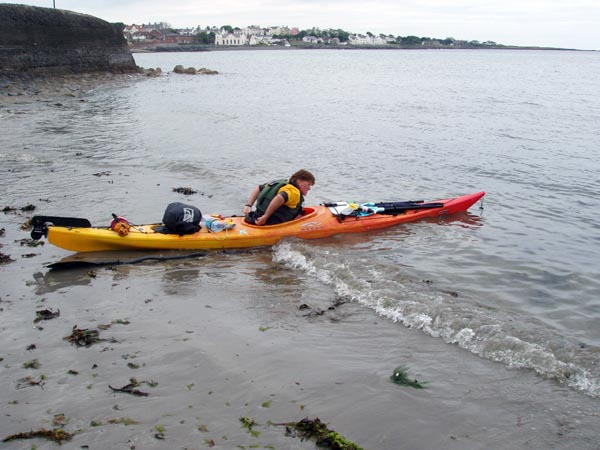
"Local knowledge on an expedition like this is key, and can stop you from making some big mistakes. The locals around the coastline were extremely friendly and gave useful information freely. I couldn't have done it without all the help and support I received along the way. In the bad weather I got very frustrated that I wasn't making any progress, but fortunately I gained motivation and help from a friend – Adrian Harkin www.justkayak.ie whose knowledge of the tides and sea state helped me to get round the Inishowen Peninsula. This was definitely one of the toughest parts of the journey."
Once Elaine had made it round Malin Head the wind and swell were with her and she began to make real progress and get back on track. With a number of paddling partners she paddled from Glengad Head to Shroove and onto Portrush and Ballintoy in strong winds. From Fairhead and Torr Head the weather began to ease and she made it on as far as Cushendun where she had her second acquaintance with the emergency services.
I passed a boat heading the other direction who must have radioed the coastguard to say they saw a kayak out at sea in windy conditions. On arrival at Cushendun I saw a coastguard van close to the shore that was checking to see I made it to shore safely. It's funny that the first two things people say to you after you come ashore are 'what are you doing out in weather conditions like that' and when they hear about my expedition they ask 'are you mad?!'
Elaine paddled on to Glenarm, Larne and Whitehead then across Belfast Lough to Bangor in a small window where she would not have to deal with the swell created by the Stena HSS. From Bangor the weather turned bad again, the wind swung into the South East which meant that she had to deal with the head on wind. Hugging the shoreline for safety she found herself caught in several eddies (where the tide flows the opposite direction) which was making it even tougher.
"I was quite surprised about the tidal range on the East coast and with the strengthening head on winds, it felt like I was paddling uphill. I must have been too close to the shore, but I didn't want to venture too far from land in case some unexpected weather closed in."
Crossing the Strangford Narrows proved to be a challenge too far in the weather conditions and Elaine had to rest up in Portaferry for the night with SHARE'S chairman – Bill Hosford. The Narrows is one of Ireland's greatest tidal races with tidal ebb and flows of up to 15 knots. Bill describes his admiration for Elaine's journey;
"As I watched Elaine paddle out through the swell, I was overwhelmed by this one lady's determination, Elaine was concentrating hard on her paddling and crossed the waves quickly and skilfully! She made it safely across to Gunn Island, but for a few minutes, my heart was in my mouth!
However the hairiest part of her trip was yet to come. After stopping in Dundrum Bay for the night, Elaine attempted to paddle out through the surf at Newcastle which in a heavy boat can be extremely difficult. Realising that she may well capsize Elaine turned and 'Bongo Slid' back in losing some of the gear strapped to her boat. "I had to wait for 1.5hrs until the tide dropped and the sea state flattened. This experience had taken its toll on her boat as she found that her kayak had started to take on water. She stopped in Cornmill Quay courtesy of Life Adventure Centre to fix the damage to her boat.
The following day Elaine paddled from Annalong to Kilkeel and headed for Carlingford and into Dundalk Bay where she would enter the quieter inland waterways of the Fane River. However as she was paddling against the flow, the two days paddling to Lough Muckno was longer than she had first anticipated. From Lough Muckno she hit dry land where she got a lift 7kms to Ballybay where she entered the Dromore river system stopping at Tanagh OEC. Paddling on to Belturbet and Crom, Elaine entered the home straight to Share on Upper Lough Erne, where she had started 26 days earlier. She was greeted by Share Staff.
Although the initial paddle forms part of her training, Shooter's long term goal for 2011 is a goal is to complete the 1000 mile clockwise circumnavigation of Ireland in 2011 as a fundraiser for SHARE whose leisure suite was flood stricken last year.
If you are interested in following Shooter's Challenge you can join her facebook group: Canoe Around Ireland which will have regular updates on her progress as well as blogs for each day and photos and video footage en route.
Elaine Trains for 1000 mile Kayak Round Ireland
Six months on from the Fermanagh floods local lass ‘Shooter’ aims to raise funds for flood stricken SHARE by paddling around Ulster and Ireland.
Ulster Woman – Elaine Alexander (aka Shooter) starts training to tackle her toughest challenge to date. Her long term goal for 2011 is a 1000 mile clockwise circumnavigation of Ireland by Sea Kayak to raise funds for SHARE whose leisure suite was flood stricken last year. However the first step in her long term training programme is to circumnavigate Ulster. Departing on June 26th, Shooter aims to paddle from SHARE via the Erne/Shannon link to Ballyshannon where she leaves the shelter of the inland waterways to brave the rolling seas. Paddling around the West, North and East Coast, Shooter will finally come back to the sheltered inland waters via the Fane River below Dundalk bay before starting the homeward leg through Monaghan (where she grew up) and back to SHARE.

The Monaghan born lass has worked in the Outdoor Industry (at SHARE) for 15 years and has previously represented Ireland in surf kayaking in Mundaka and Costa Rica and regularly features on the podium in the CANI league. This experience should help her as she suggests
“Paddling in big seas is very different to the sheltered waters of Lough Erne that I train on, but hopefully the experience of paddling in the sea and surf will help me on the trip. There will more than likely be days where the weather is too bad to go out, which I can use as rest days, but hopefully not too many to halt my progress altogether.”
Shooter’s training involves paddling 4 evenings per week on Upper Lough Erne along a ten mile stretch from SHARE to Crom. The picturesque paddle is full of wildlife and forms part of the Lough Erne Canoe Trail which Shooter believes to be one of the best paddling destinations in the world.
“The training is quite easy to get hooked on when you see the scenic beauty of the area. There are lots of islands, one of which plays host to the headquarters of Hare Krishna Community who come out and wave as you pass! There are swans, pine martin and deer as well as Ireland’s oldest Yew Trees, Crom Castle and Gad Island Tower along the route so the scenic beauty is unrivalled. This forms the first section of the route. The Coastline of Ireland is also beautiful, so the element of exploration will keep me motivated!”
Although the initial paddle forms part of her training, Shooter’s goal is to complete the 1000 mile clockwise circumnavigation of Ireland in 2011 as a fundraiser for SHARE. The Charity, set up to promote the inclusion of disabled and non-disabled persons, which has already faced a difficult financial year in the current economic climate will have to overcome the financial burden of the flood damage and lost revenue due to the closure of their gym and leisure suite as Oliver Wilkinson - Share Chief Executive suggests;
“The leisure suite which has been open for around 14 years was the only fully accessible gym facility in the local area which welcomed many people with disabilities and held a lot of specialist equipment. It is estimated that the damage will total in the region of £700,000. We are hopeful that a newly refurbished state of the art leisure suite and gym will be open for our peak season and work is already well underway. Shooter’s fundraiser is the first of many challenges that staff and friends of SHARE have decided to undertake over the coming year and we wish her the best of luck on her challenge”
It is estimated that the paddle will take three weeks to complete. If you are interested in following Shooter’s Challenge you can join her facebook group: Canoe Around Ireland which will have regular updates on her progress as well as blogs for each day and photos and video footage en route.


























